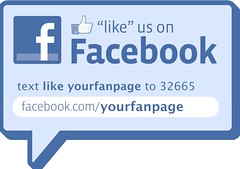What World of Warcraft’s Patchwerk Can Teach You About Recovering Morale
 Last night, our guild downed Patchwerk, a giant abomination in Naxxramas, for the zillionth time. Patchwerk isn’t a challenge any more – in fact, he hasn’t been a challenge in a really long time. We bring our 10 man team in and in about 11 minutes from start to finish, we crush Patches, loot his swollen, bloated corpse, and move on with our evening…
Last night, our guild downed Patchwerk, a giant abomination in Naxxramas, for the zillionth time. Patchwerk isn’t a challenge any more – in fact, he hasn’t been a challenge in a really long time. We bring our 10 man team in and in about 11 minutes from start to finish, we crush Patches, loot his swollen, bloated corpse, and move on with our evening…
… and I love him for it. I love that he’s absolutely no challenge whatsoever because sometimes, you just need some easy wins to rebuild your momentum. When life throws you challenges, you get to step up, learn more about yourself, explore and go beyond your limits, and ultimately become a more powerful, better person.
That said, challenges that are never-ending can grind you down. They can, if you’re not careful, wear you out. Going 120% all the time means you run out of fuel much faster, and that can create significant gaps in your personal momentum and progress from burnout.
That’s why non-challenges like Patchwerk are useful, productive, and essential to you. You absolutely need some stuff that’s easy-mode, that’s a sure-fire victory to bolster your morale, provide some mental breathing space, and give you perspective. What was once a hard fight, what was once a hard battle, is now a walk in the park and that change in perspective can be incredibly reassuring. You can measure and see objective results about how far you’ve progressed by how easily you crush your formerly difficult enemies.
If you’re pushing the boundaries of your personal or professional life, who’s your Patchwerk?
Did you enjoy this blog post? If so, please subscribe right now!
Get this and other great articles from the source at www.ChristopherSPenn.com! Want to take your conference or event to the next level? Book me to speak and get the same quality information on stage as you do on this blog.



 Facebook’s been mailing “Like” signs to small businesses to encourage use of their fan pages. But suppose you didn’t get one from Zuck? Or maybe you need more than one? Rest easy! This Photoshop template will help you get rolling – just download it, edit in Photoshop, and be on your way.
Facebook’s been mailing “Like” signs to small businesses to encourage use of their fan pages. But suppose you didn’t get one from Zuck? Or maybe you need more than one? Rest easy! This Photoshop template will help you get rolling – just download it, edit in Photoshop, and be on your way.






